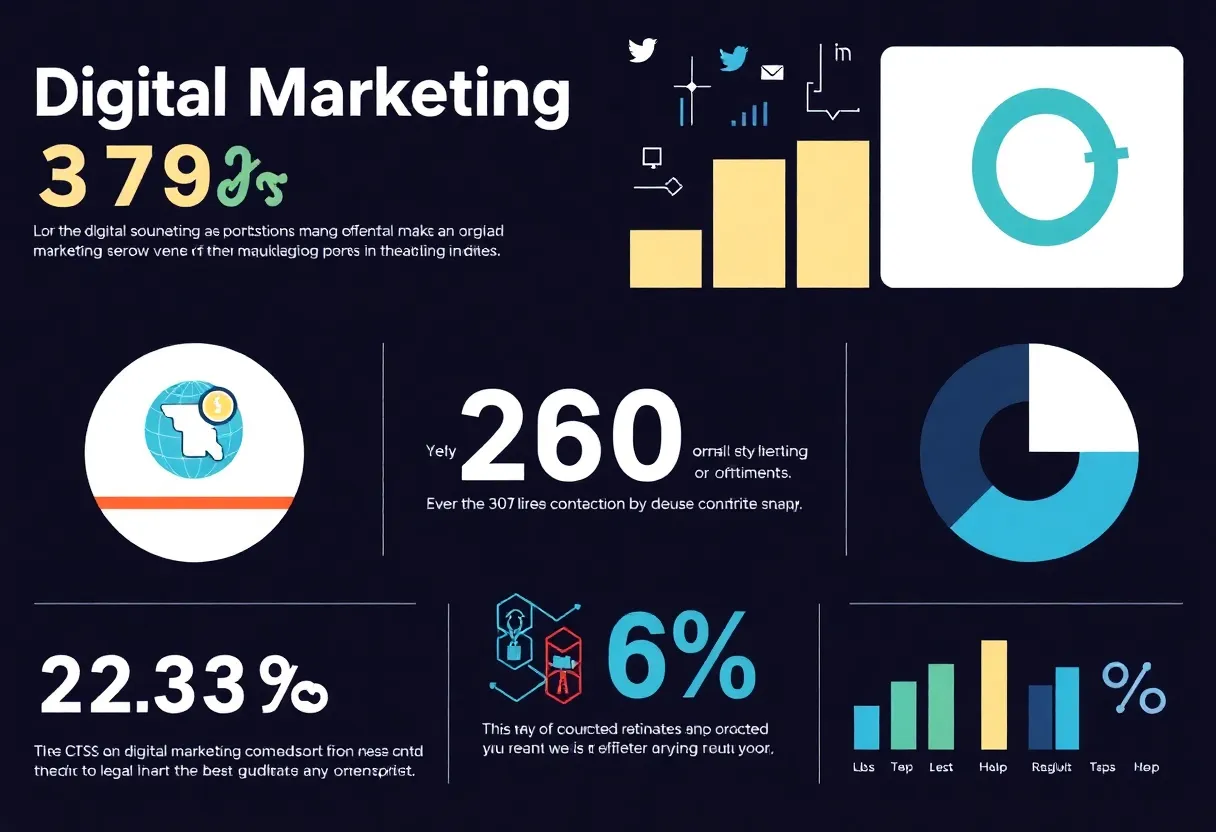How to Create Shareable Infographics That Elevate Your Digital Marketing Strategy
Introduction to Infographics in Digital Marketing
In today’s digital landscape, infographics have emerged as a powerful tool in the arsenal of marketers. Infographics combine visuals and text to convey complex information quickly and effectively. Their shareable nature helps brands engage audiences, increase visibility, and enhance their overall marketing strategy.
Understanding the Importance of Shareable Infographics
Shareable infographics serve several critical functions in digital marketing:
- Enhanced Engagement: Infographics can significantly increase attention spans and interaction rates.
- Information Retention: Visual content helps individuals retain information better than text alone.
- Brand Visibility: Infographics can go viral, reaching wide audiences through shares on social media platforms.
- Improved SEO: Infographics can attract backlinks and drive traffic to websites, positively impacting search engine rankings.
Key Elements of a Successful Infographic
1. Compelling Data and Statistics
The foundation of any effective infographic is actionable data. Research current trends, gather relevant statistics, and ensure that your data is accurate. The information you choose to highlight must be interesting and relevant to your target audience.
2. Clear and Engaging Visual Design
Design plays a crucial role in the effectiveness of your infographic. Use colors, shapes, and images that align with your brand identity. Ensure that the visual hierarchy leads the viewer’s eye through the infographic naturally.
3. Concise and Informative Text
While visuals carry much of the weight, accompanying text is also necessary. Keep it concise, using bullet points or short sentences. Aim for a clear message that enhances the understanding of the data presented.
4. Strong Call to Action (CTA)
Make sure to incorporate a clear and compelling call to action within your infographic. Whether it’s encouraging viewers to visit your website, sign up for a newsletter, or share the infographic with their networks, a CTA can help achieve your marketing objectives.
Steps to Create Shareable Infographics
Step 1: Define Your Purpose and Audience
Begin by determining the purpose of your infographic. Ask yourself what message you want to convey and who your target audience is. Knowing your audience will shape the content, tone, and design of your infographic.
Step 2: Research and Gather Data
Conduct thorough research to find credible data that supports your infographic’s message. Use reputable sources for statistics and facts, ensuring that your information is trustworthy and relevant.
Step 3: Create a Storyboard
Plan the layout and flow of your infographic before diving into design. Create a storyboard that outlines how the data will be presented, identifying key sections, and ensuring that the narrative flows logically.
Step 4: Choose the Right Design Tools
There are numerous tools available for creating infographics. Consider using platforms like Canva, Piktochart, or Adobe Illustrator to design your infographic. These tools offer templates and features that simplify the design process.
Step 5: Focus on Branding
Integrate your brand elements throughout the infographic. Use your brand colors, logo, and fonts to ensure that the infographic is easily recognizable and represents your brand effectively.
Step 6: Optimize for SEO
SEO optimization is essential for increasing the visibility of your infographic. Utilize relevant keywords in the title, description, and alt text of the infographic. This practice increases the chances of your infographic being discovered through search engines.
Step 7: Share on Multiple Platforms
Once your infographic is complete, it’s time to share it. Distribute it across various platforms, including social media, your blog, and email newsletters. Tailor your message for each platform, encouraging shares and engagement.
Measuring the Success of Your Infographics
To understand the effectiveness of your infographics in achieving your marketing goals, you should measure their performance through key metrics:
- Engagement Rates: Monitor likes, shares, and comments to evaluate audience interaction.
- Website Traffic: Analyze traffic to your site following the release of the infographic to see its impact.
- Backlinks: Track the number of backlinks generated by the infographic, indicating its value and reach.
- Conversion Rates: Evaluate how many users took the desired action as a result of viewing the infographic.
Common Mistakes to Avoid When Creating Infographics
1. Overloading with Information
One of the most significant pitfalls in infographic design is overwhelming the viewer with too much information. Simplify your message and eliminate unnecessary data.
2. Poor Quality Design
Poor aesthetic design can detract from the information conveyed in the infographic. Invest time in design or seek professional help if needed, as a polished infographic is more likely to be shared.
3. Ignoring Mobile Compatibility
With many users accessing content on mobile devices, ensure that your infographic is optimized for all screen sizes. A mobile-friendly design enhances accessibility.
Conclusion
Creating shareable infographics can greatly elevate your digital marketing strategy. By focusing on engaging design, compelling data, and strategic sharing, you can create visual content that not only captures attention but also drives meaningful engagement. Upon executing these strategies, you will find that the effectiveness of your marketing efforts increases significantly. Embrace infographics as an essential element of your digital marketing arsenal for optimal results.
Author: STAFF HERE FLORENCE WRITER
The FLORENCE STAFF WRITER represents the experienced team at HEREFlorence.com, your go-to source for actionable local news and information in Florence, Florence County, and beyond. Specializing in "news you can use," we cover essential topics like product reviews for personal and business needs, local business directories, politics, real estate trends, neighborhood insights, and state news affecting the area—with deep expertise drawn from years of dedicated reporting and strong community input, including local press releases and business updates. We deliver top reporting on high-value events such as the Florence Festival of Lights, Pee Dee Pride, and agricultural expos at the Florence Center. Our coverage extends to key organizations like the Florence Regional Chamber of Commerce and the Pee Dee Area Council of Governments, plus leading businesses in healthcare and retail that power the local economy such as McLeod Health and Pee Dee Electric Cooperative. As part of the broader HERE network, including HERECharleston.com, HEREColumbia.com, HEREGreenville.com, and HEREHiltonHead.com, we provide comprehensive, credible insights into South Carolina's dynamic landscape.







